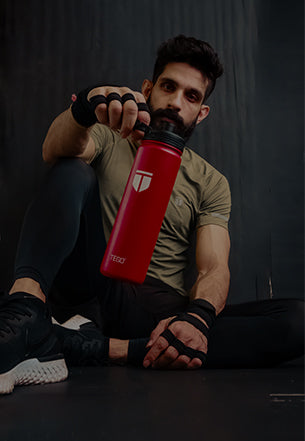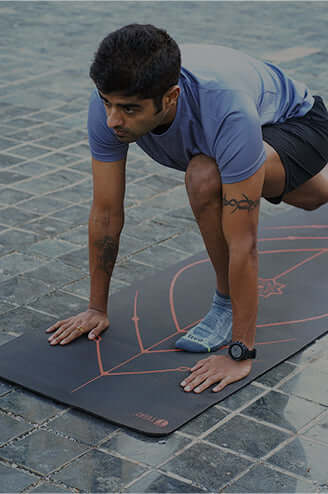It’s rarely just the heavy lifts that wear you down. It’s also the hours between them - the desk posture that caves the spine, the late-night scroll that tightens the neck, the recovery day that never quite restores. At some point, every athlete - everyday or elite - hits that quiet moment of recalibration. When movement stops serving you, the body is simply asking for a different kind of work.
In our latest Evolve feature, we spoke with Kirsten King, founder of Fluidform Pilates and a teacher with more than twenty-five years in the method. Her journey began the way many Everyday Athletes’ do - with repetition, strain, and a lesson learned the hard way.
“I was a runner, used to cover ten or twelve kilometres every day,” Kirsten recalls. “Then I injured my knee and couldn’t run. I turned to Pilates for rehab — and I fell in love with it.”
Watch Kirsten share why Mat Pilates is the simplest, most effective way to bring your body back into balance:
The Method That Meets You Where You Are
What Kirsten discovered wasn’t just rehabilitation; it was a complete re-education in how the body moves. And that’s precisely why Mat Pilates matters — because it meets you at any stage of strength or fatigue and quietly rebuilds from the inside out.
“Pilates doesn’t discriminate,” she says. “It’s for everyone, because at its essence it’s about realigning the spine, finding balance, and re-teaching each small muscle to do its job.”
For runners stacking weekly mileage, parents bent over strollers, or professionals chained to laptops, repetitive movement creates predictable imbalance. One side overworks. Deep stabilisers switch off while superficial muscles take the load. Joints stiffen. The body compensates until the compensation becomes the new normal.
Mat Pilates reveals those silent distortions and resets them , not through more intensity, but through precision. Every rep is information. Every tremor, feedback.
Five Signs Your Body Is Asking for the Mat
Before diving into the method, recognise the signals. Imbalance doesn’t always shout; it whispers.
-
Your mobility has a ceiling.
You stretch constantly, yet the same hip or hamstring stays locked. Mat Pilates lengthens and releases through controlled, intelligent motion rather than passive stretch. -
One side does all the talking.
The right leg always leads; one shoulder always hikes. Asymmetry is human, but when it dominates, dysfunction follows. Pilates restores bilateral dialogue. -
Your core is strong - but not stable.
A two-minute plank means endurance, not integration. Mat Pilates builds dynamic stability - control that holds while you move. -
Recovery keeps stretching longer.
You’re sore in odd places, or fatigue lingers. The issue isn’t lack of rest; it’s poor mechanics multiplying under load. -
You’re training hard but moving poorly.
Volume without quality is architecture on weak foundations. Pilates rebuilds that base before you stack intensity again.
If even two of these sound familiar, you’re not broken. You’re ready.
Back to Where It All Began
When Joseph Pilates created his method in the early twentieth century, he called it Contrology - the complete coordination of body, mind, and spirit. He believed that mastery over one’s own body was the first prerequisite of happiness.
The mat was his original apparatus: simple, portable, and utterly unforgiving. There was nowhere to hide. Nearly a century later, that simplicity remains its greatest power.
Because what today’s Everyday Athlete needs isn’t another way to go harder; it’s a practice that teaches them to move better.
There’s something quietly radical about lying on a mat and realising your own body weight is all it takes to rebuild strength, balance, and control. No reformers. No mirrors. Just breath, focus, and disciplined precision.
The mat strips movement to its essence. Every inch of control matters. Momentum has no place to hide the cheat. What remains is awareness - that rare connection between intention and action.
The Reset Modern Bodies Need
Kirsten’s observation on repetition cuts deep: runners move in one plane, cyclists lock into one posture, desk workers freeze in one shape for hours. The body adapts - it gets efficient at the wrong things. It braces instead of stabilising. It compensates instead of correcting.
Mat Pilates interrupts that loop. It reintroduces rotation, lateral flexion, and spinal articulation - the forgotten grammar of movement. It builds strength not through external load but through range, control, and sustained tension in positions that demand full-system coordination.
For the Everyday Athlete, this is more than mobility work; it’s movement literacy. The mat becomes feedback, mirror, and teacher all at once.
Consistency here translates everywhere: into smoother stride mechanics, freer shoulder motion, better posture at the desk, faster recovery after training. The payoff isn’t visible sweat; it’s invisible alignment — the kind that quietly improves every other session you do.
The Takeaway
Mat Pilates isn’t a softer substitute for “real” training. It’s the system beneath it - the calibration that keeps all your other efforts honest.
Every rep on the mat is a conversation with gravity, an audit of where your body cheats and how it heals.
And for those moments when progress feels stuck, when your body feels foreign to your will, this is the practice that returns you to yourself - to the original core of movement.







